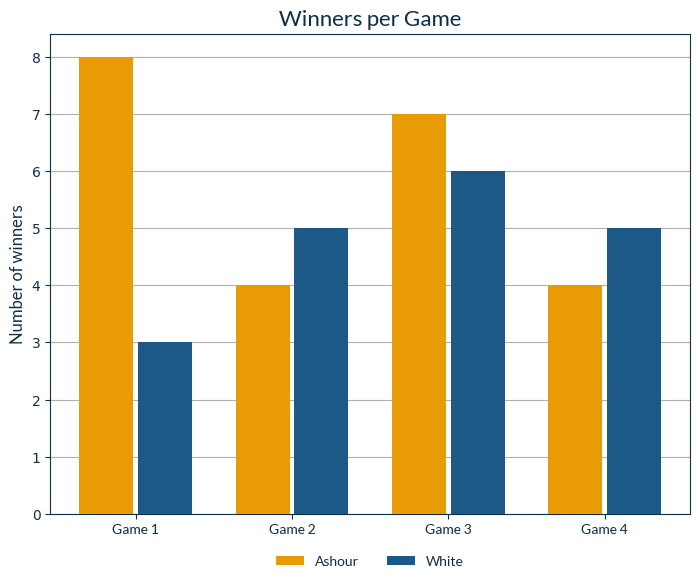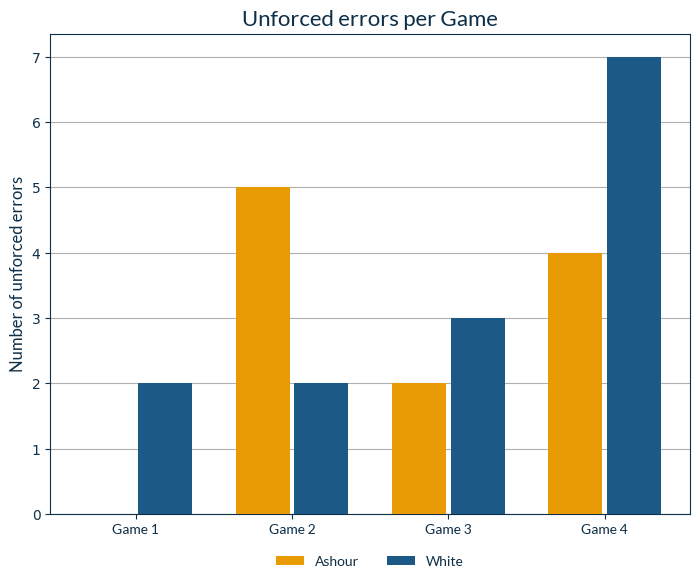Blog: Ashour vs White
Watching the British Junior Open in January got me thinking about some of the breakout young stars we have seen recently and wondering when, more than if, they will make their mark on the PSA world tour. One career they would do well to emulate is that of Ramy Ashour, who in 2007 was 19 years old, recently graduated from juniors, world number 5 and near-enough redefining how people thought about squash. It would take a brave man to take him on at his own aggressive game but in the Semi-Final of the Kuwait Open 2007 there was someone willing to take on the challenge - former world number 1, John White. This was the richest squash tournament of all time at this point but neither player would be weighed down by that, playing with freedom despite the occasion. A recap of the event can be read here - notably Ramy goes on to win beating top seed Amr Shabana in the final.
This match can be viewed on Youtube for free and I would highly recommend doing so. 33 minutes with only 4 decisions and no reviews make this match breathtaking from start to finish, and only enhanced by looking at the data behind it – we’ll take a peek at why this match was so special.
Story of the match: Both of these players are incredible shotmakers, and this is reflected in the winner count as Ramy slots 8 winners in 6 minutes with no unforced errors to take the first game 11-3 (all 3 of White’s points also being winners!).
Figure 1: Showing the rally length and outcomes for Game 1
Ramy goes off the boil slightly in Game 2 allowing White to take the second 11-8. Both players turn it on in Game 3 with winners flying everywhere -the most staggering stat is that only 2% of all shots in this game are slow-paced as they trade rapid blows. By Game 4 the relentless pace has somewhat taken its toll on both players and White’s fatigue shows as his slow shot percentage goes from 2% up to 10%, indicative of a player seeking to change the tempo. In the end White has run out of ideas and takes a few too many risks, hitting seven errors which allows Ramy to clinch the match.
Winners and errors: It is a remarkable passage of squash, but in reality when compared to the top 10 men in this blog taken from the end of 2022 (https://crosscourtanalytics.com/blog/risk-reward-squash) their winner numbers per game (5.75 for Ramy, 4.75 for White) would leave Ashour only 3rd, and White only 7th. This initially doesn’t seem right, but there’s a good reason for it…
Above- Figures 2& 3 showing the number of winners and unforced errors hit by both players per game.
What really stands out is not the number, but the rate of winners hit by both players. In the longest rallies blog we see that in the men’s top 10 (Dec 2023) Karim Abdel Gawad has the shortest rallies at an average of 13.5 shots per rally. By contrast in this match the average is roughly 75% of that at only 10 shots! At an average of roughly 10 shots per rally, 73 points, plus two lets, that gives approximately 750 shots in the match. 42 of those shots are winners, leaving a ratio of a winner being hit roughly every 18 shots. By comparison, an average rally in a Paul Coll match is 20 shots long, regardless of if it ends in a winner, error or let, putting the brevity of the rallies in Kuwait into perspective.
In terms of distance, both players cover under 400m per game on average, nearly half of that of Ali Farag in an average game (770m). This may make’s White’s fatigue seem surprising, but given both the intensity of the match and his previous round encounters (Pilley, Gaultier, Darwish) he can probably be forgiven!
Reward comes with risk: The shorter length of these rallies may be accounted for by a large number of unforced errors (2.5 per game for Ramy, 3.5 per game for John), with the most attacking players in 2022 hitting roughly 3 per game, down to 1.5 for the stingiest.
Shots from everywhere?: The short rally length might suggest that both players are going for ridiculous shots from out of nowhere. In reality they both just really back themselves to take on any half-opportunity they see to go short, and often do it very effectively. Ramy in particular put roughly 1 in 5 of the shots he hit from across the mid-court into the same side’s front corner, likely rolling drop nicks!
Figure 4: Showing where both players hit shots from the mid right of the court into.
Going short often: In total, Ramy hit about 13% (1 in 8) of his shots from advanced positions on the court, showing how often White went short, but this pales in comparison to the 17% (1 in 6!) that White had to retrieve from advanced - staggering numbers compared to the 1 in 8 short shots from Ali Farag and contemporaries.
Above - Figure 5: The percentage of shots hit from advanced positions, by game, for both players.
It's important to note that this wasn’t a one-dimensional match; when under pressure at the back of the court both players most frequently aimed to return to deep and reclaim the T, showing how important the basics still are even when playing this positive style of squash. Ramy returned 60% of his shots from the deep corners back to deep, as did White on his backhand, dropping to 50% on his forehand. These numbers are similar to those put up by Jansher and Ali Farag in the recent PSA blog post (https://www.psaworldtour.com/news/jansher-khan-v-ali-farag-a-cross-courts-analytics-comparison/), albeit with a higher proportion of those deep shots being cross-court. While that stat holds across the range of matches, one traditionally useful indicator for who is winning - proportion of shots taken on the volley - would fail to predict the winner here. White volleyed more in games 2,3, and 4, yet was unable to convert the match. Instead with the non-traditional style, perhaps more low hard shots, a more effective indicator might be the mid-court intercepts measure. On this Ashour leads in every game, taking 38% plus of shots in the mid court for games 1,2 and 4.
Figure 6: Showing the percentage of shots hit from mid-court by both players per game.
Attacking with Crosscourts: Overall both players hit 45% cross-court which is high, but not unheard of (usually 1 shot in 3), showing their attacking intent compared to the generally more defensive tight straight lines. Each player had a preferred side of the court to hit most of their crosscourts from – Ramy hit 75% of his shots from the front left cross-court while White preferred to counter-drop 40% of shots back into this area with great success (45% of his winners came into this front left area overall). Conversely in the front right Ramy counter-dropped 1 in 3 shots with White going cross-court 60% of the time, showing that both players were still clear on their plans and strengths on certain shots in certain areas.
Figure 7: Showing where both players hit their winners into for the entire match.
Summary: This was a fun match to look at the stats for, and a great jumping off point for starting to write some blogs as there are plenty of interesting quirks to compare against some more traditional players in the modern era. The stats really capture how fast and frenetic this match was, truly impressive stuff from Ramy at just age 19. I am hoping some of the new talent on the block will provide us with an equal amount of entertainment in the years to come.
Jesse Mills








